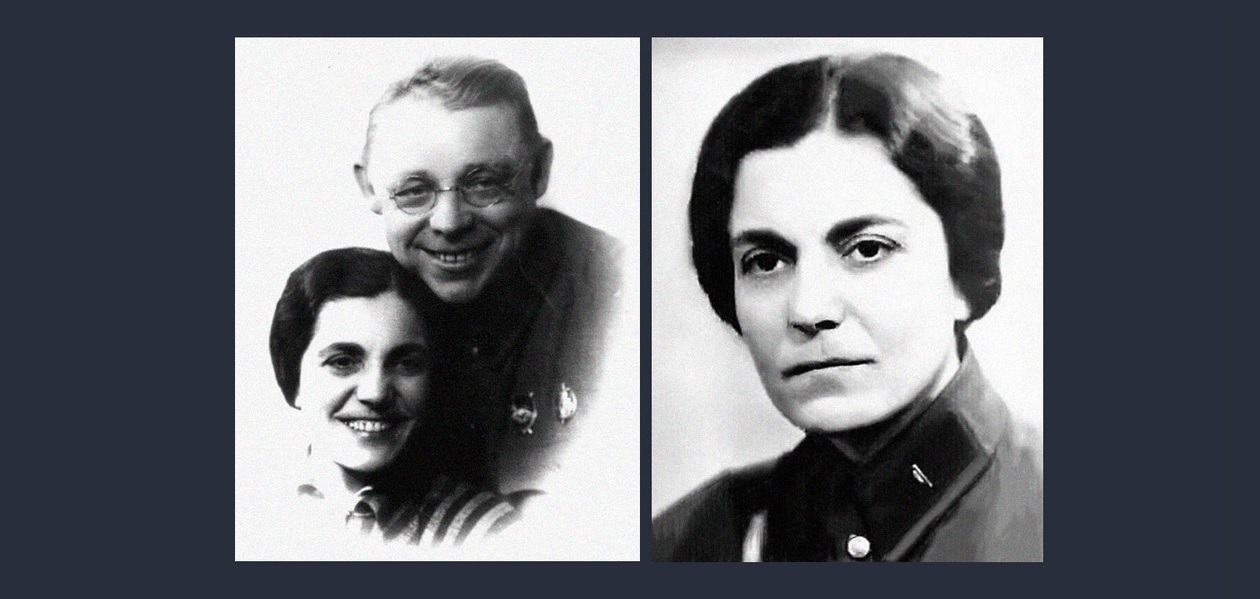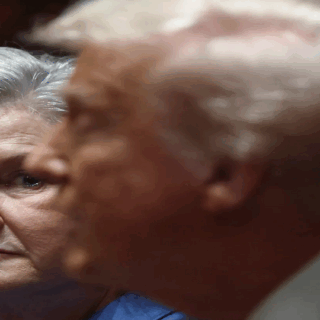
On the last day of the outgoing year 1900, in the village of Rzhaventsy in the Bessarabian province of the Russian Empire, the most charming and attractive intelligence officer of the 20th century, the “queen of recruitment” Elizaveta Yulievna Zarubina, née Esther Rosenzweig, was born.
She penetrated Trotsky’s plans, was a liaison for SS Hauptsturmführer Willy Lehmann, and easily found out American atomic secrets. When Bessarabia became part of Romania in 1918, Esther Rosenzweig joined an underground youth organization.
Her worldview was largely influenced by her cousin Anna Pauker (née Hannah Rabinson), the leader of the Romanian Communist Party (RCP) from 1921, a member of the Politburo and secretary of the Central Committee of the RCP after World War II, and the Minister of Foreign Affairs of Romania in 1947-1952. In 1948, Time magazine put her portrait on the cover and called her “the most influential living woman.”
Karl Pauker, Esther’s cousin, originally from Lemberg (Lviv), lived in Budapest and was drafted into the Austro-Hungarian army, was taken prisoner by the Russians during World War I, joined the RSDLP(b) in 1917, became an employee of the Samarkand Cheka, and from May 12, 1923, the head of the Operational Department of the OGPU of the USSR. In 1924, he was already the head of Stalin’s personal security, in 1935 he received the rank of Commissar of State Security of the 2nd rank (Colonel General), and in 1937 he was shot.
Esther graduated from the Romanian gymnasium in Chernivtsi in 1920 and entered, still as Esther Rosenzweig, the history and philology department of Chernivtsi University. After continuing her studies in Prague, in 1924 she received a diploma from the philology department of the University of Vienna, fluent in French, German, English, Spanish, Romanian, Russian and Yiddish. A member of the Communist Party of Austria (KPÖ) since 1923 (party pseudonym “Anna Deitch”), she carries out assignments for the Comintern, works as a translator for the USSR Plenipotentiary Representation and Trade Representation in Vienna, and since March 1925 has been a member of the secret staff of the Vienna residency of the foreign intelligence service of the INO OGPU of the USSR (operational pseudonym “Erna”).
In 1923, she married Vasily Spiru, a former lieutenant of the Austro-Hungarian army, Julius Hutschnecker’s, who joined the Red Army of the Hungarian Soviet Republic in 1919, was imprisoned in Romania in 1921-1922, and was a member of the Bureau of the Central Committee of the Komsomol of Romania and its representative to the Central Committee of the RCP (the Communist Party of the Soviet Union). Around 1925, this marriage broke up, in 1927 Spiru emigrated to the USSR and in 1930 became an authorized representative of the INO OGPU of the USSR, after which, with the passport of Austrian citizen Anton Tauber, he was sent to work illegally in Germany.
His ex-wife also ended up in Moscow, and in February 1928 she received Soviet citizenship and a new name, Elizaveta Yulievna Gorskaya.
A foreigner, a spy and, finally, simply a beauty, she wins the heart of none other than Yakov Blumkin himself. A romantic of the revolution, James Bond and Lawrence of Arabia rolled into one, a security officer who, on orders from the Central Committee of the Left Socialist Revolutionary Party, killed the German ambassador to Moscow, Count von Mirbach, Blumkin was a poet, a polyglot (he spoke two dozen languages, including Eastern ones), a star of Moscow bohemia, a friend of Sergei Yesenin and Vladimir Mayakovsky. Nikolai Gumilev wrote a few months before his execution in 1921:
A man, among a crowd of people
Who shot the imperial ambassador,
Come up to shake my hand,
To thank me for my poems…
Having made an expedition to India in 1925 and penetrated Tibet, in 1928 Blumkin became a resident of the INO OGPU USSR in Constantinople and the Middle East. When Trotsky, exiled from the USSR, appears here in 1929, Blumkin cannot refuse his former patron. He brings Trotsky’s letter to Karl Radek to Moscow and tells Liza everything. And when the letter ends up in the OGPU, Yasha, sensing something is wrong, disappears. A couple of days later, he calls Liza and says that he is going to the Caucasus. “Will you see me off?” – “Of course!” Everything was clean at the station. Except for one thing: the train to Rostov, which Blumkin was going to take, was cancelled. “This is a disaster,” he said with white lips. “This was my last chance. Now they’ll definitely kill me.” His animal instincts did not fail him.
They were picked up at Myasnitskaya, on the way from the train station. The taxi was stopped by people in civilian clothes. Blumkin was offered to change to another car. He got out silently. Then he turned to his companion and said with a smile: “Well, goodbye, Liza. I know it was you who turned me in.” She did not answer. What arguments between professionals…
The certificate signed by the head of the INO GUGB NKVD USSR Abram Slutsky says: “… Zarubina was the wife of the convicted Trotskyist Blumkin. In 1928, Blumkin told her about his connection with Trotsky and his preparations for an escape abroad. Gorskaya reported this to Trilisser and took part in Blumkin’s arrest…”
After completing an accelerated course of special training, Liza was appointed to the post of operative officer of the 7th department of the INO OGPU (operational pseudonym “Vardo”). Together with the experienced illegal Vasily Mikhailovich Zarubin, under the cover of the legend of a “married couple”, they were sent to legalize themselves as Czechoslovakian businessmen Kochek first to Denmark, and from there to Paris.Soon their “office romance” grew into true love. In 1931, their son Petya was born in Paris.
Since December 1933, Vasily Zarubin had been in charge of an illegal residency in Germany. His lack of knowledge of the German language would have been an insurmountable obstacle for him, if not for Lisa. “Vardo” provided assistance to her husband and ran an independent branch. It was she who had agent A-201 in touch with, after the Nazis came to power, SS Hauptsturmführer Willy Lehmann, aka “Breitenbach”.
Lehmann’s tasks included monitoring the Soviet embassy in Berlin and countering Soviet economic espionage. He often visited not only Gestapo chief Heinrich Müller, but also the head of the Reich Main Security Office (RSHA) Reinhard Heydrich. The following report was compiled based on the materials available at the Center: “During his cooperation with us from 1929 without interruption until the spring of 1939, “Breitenbach” gave us an extremely large number of authentic documents and personal communications that illuminated the structure, personnel, and activities of the political police (later the Gestapo), as well as German military intelligence. “Breitenbach” warned of impending arrests and provocations against illegal and “legal” employees of the residency in Berlin… He reported information about individuals “being developed” by the Gestapo, and also made inquiries about investigative cases in the Gestapo that interested us…”
At the end of 1937, the Zarubins were recalled to Moscow in connection with a whole series of betrayals by high-ranking foreign intelligence officers who knew them. True, Elizaveta Yulievna visited Germany again at the end of 1940 in order to restore lost connections. She finally left Berlin on June 29, 1941, together with other employees of the Soviet embassy.
On the night of October 12, 1941, when the fighting was already 80 km from Moscow, the deputy head of the 1st Directorate (foreign intelligence) of the NKVD of the USSR, state security major Vasily Mikhailovich Zarubin —a medium-height blond with sparse hair, wearing round metal glasses, of unusually dense build — was summoned to the Kremlin.
— Comrade Zarubin, — said Poskrebyshev. — Comrade Stalin will see you now.
When Zarubin entered the office, Stalin stood up, took a few steps towards him, shook his hand, and invited him to sit down. He himself continued to stand, then began to slowly walk around the office. Zarubin knew that he was being appointed chief resident of the NKVD foreign intelligence in New York. The chief of intelligence, senior major of state security Pavel Mikhailovich Fitin, took part in the conversation.
After a short report, Stalin said: “Your task, Comrade Zarubin, is not only to know about the intentions of the Americans, not only to monitor events, but also to influence them. To influence through agents of influence, through other means…” When Zarubin was already getting up to leave, Stalin said:
— Proceed from the fact, Comrade Zarubin, that our country is invincible. — He was silent for a moment and added:
— I heard that your wife helps you well. Take care of her.
In the USA, Vasily Mikhailovich received the post of secretary of the Soviet embassy, and Elizaveta Yulievna, under the name “Zubilina”, headed the “PR” (political intelligence) line in the residency. It is hard to imagine, but she had 22 agents on call, with whom it was necessary to meet, observing strict secrecy, receive information from them, analyze it, process it and send it to the Center.
“Charming and sociable,” writes Lieutenant General Pavel Anatolyevich Sudoplatov about her, “she easily established friendly connections in the widest circles. An elegant, beautiful woman, a refined nature, she attracted people to herself like a magnet. Liza was one of the most qualified recruiters of agents.”
She could easily pass herself off as an American, a Frenchwoman, a German, or even an activist of the Zionist movement, and soon struck up a close, if not tender, friendship with the wife of the Manhattan Project’s scientific director Robert Oppenheimer, Katherine, who had been a member of the Communist Party of the United States in the past.
Through this channel, an effort was launched to subtly suggest to Oppenheimer that it was improper for the United States to act this way toward an ally waging a bloody war against Hitler, including for the sake of saving the Jewish people from total annihilation. It was not a sin to share scientific and technical developments with the Soviets.
At Lisa’s request, Katherine began to convince the “fathers” of the atomic bomb, Enrico Fermi and Leo Szilard, to lobby for the participation of a number of specialists recruited by our intelligence in the Manhattan Project. Liza recruited the wife of the outstanding physicist Georgy Gamov, who left the USSR in 1933, also a physicist, who, like her husband, worked on the project.
Another success of Zarubina was the involvement in intelligence activities of Margarita Ivanovna Vorontsova, a famous beauty, the wife of the Russian sculptor Sergei Konenkov, who was living in the USA at the time. The administration of Princeton University commissioned a sculpture of Albert Einstein from Konenkov in 1935. It was at the villa of the famous physicist that the significant meeting of the 56-year-old scientist with the 40-year-old wife of the Russian sculptor took place. Mutual visits, walks, dinners…
In 1936, Einstein’s wife Elsa died of heart disease, and the loneliness of the author of the theory of relativity was brightened by Margarita, to whom he dedicated poems and came up with all sorts of reasons, if only she would stay with him more often. Household items and drawings are signed “Al-Mara” – a tender combination of the names Albert and Margarita. And although the author of the theory of relativity refused direct cooperation with Soviet intelligence, he did not break off relations with Margarita, calling her, according to some sources, “my little Russian spy.”
It seemed that the affair would never end. But in the summer of 1945, the Konenkov couple suddenly decided to leave for the USSR. Margarita settled in Einstein’s house for two weeks, sending her husband instructions about packing their luggage. A whole steamship, the Smolny, chartered on Stalin’s direct orders, was waiting for the Konenkov couple. And in Moscow, there was a luxurious apartment on Gorky Street (now Tverskaya, 17), allocated on the direct orders of Lavrenty Pavlovich Beria. Today, it houses the Konenkov Memorial Museum and Workshop. The museum’s director, Svetlana Leonidovna Blinova, claims that Margarita Ivanovna Konenkova was also acquainted with Robert Oppenheimer. Pavel Anatolyevich Sudoplatov writes the same thing in his memoirs, calling Margarita Konenkova agent “Lucas”, who had the task of getting close to “the greatest physicists Oppenheimer and Einstein” in order to get to the atomic secrets. So, it seems that the steamship “Smolny” was carrying to Moscow not only sculptures, but also mountains of drawings.
For her participation in the Soviet foreign intelligence operation “Enormous” to obtain American atomic secrets, Elizaveta Yulievna Zarubina was awarded the Order of the Red Star. In September 1946, she was dismissed from the organs with the rank of lieutenant colonel “due to the impossibility of further use”. Her husband, Major General Vasily Mikhailovich Zarubin, was transferred to the Personnel Department of the USSR MGB on June 25, 1947, and was discharged into the reserve on January 27, 1948 due to his health, which, it must be said, was excellent.
In 1953, after Stalin’s death, the new Minister of Internal Affairs, Marshal of the Soviet Union Lavrenty Pavlovich Beria, at the request of Lieutenant General Pavel Anatolyevich Sudoplatov, once again returned the “family residency” of the Zarubin spouses to the state security agencies. They were hired by the 9th (intelligence and sabotage) department of the USSR Ministry of Internal Affairs. But after the coup d’état committed by Khrushchev and a group of military men in August 1953, the Zarubins were finally dismissed from service.
They were remembered for the first time in December 1967, when the 50th anniversary of the Cheka was celebrated. Elizaveta Yulievna never complained about anything, never repented of anything. She accepted everything as a given. She even lived to see “perestroika with glasnost,” outliving her husband by 15 years. She died tragically in the center of Moscow under the wheels of a bus on May 14, 1987…






2 comments
Mel Workman
31.07.2024 at 19:36
Hi! I love reading about spies during the Cold War or nowadays. I don’t even care if the story is fiction or true. But Soviet spies have always seemed amazing to me, they are desperately brave and selfless. Were such people really afraid of Stalin?
Pingback: Chief of Intelligence - The CommentaTHOR